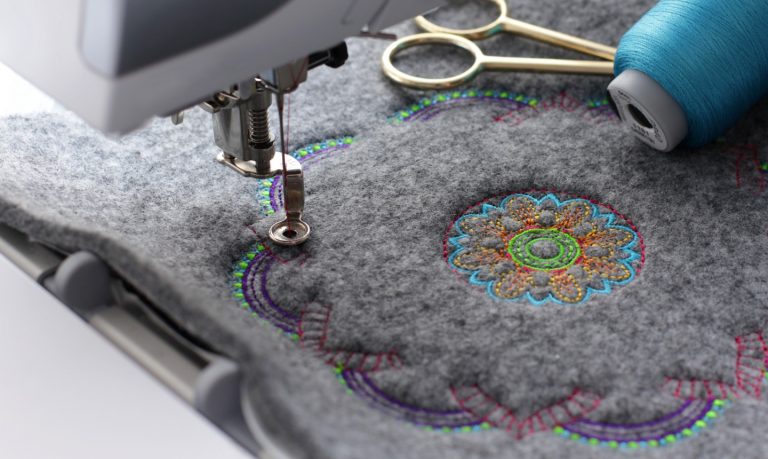Explore Various Sorts Of Needlework Digitizing Techniques
Embroidery digitizing has developed dramatically for many years, offering a myriad of techniques to bring designs to life in the digital world. From the complex creativity of conventional hand embroidery digitizing to the precision of the punching strategy, and the comfort of auto-digitizing software program programs, the alternatives are substantial. In addition, the world expands to advanced methods like photorealistic needlework digitizing and the interesting realm of 3D embroidery digitizing. Each technique brings an one-of-a-kind set of possibilities and challenges to the table, making the expedition of these techniques a compelling journey for those in the embroidery world.
Conventional Hand Needlework Digitizing
Conventional hand needlework digitizing entails the process of converting detailed hand-stitched styles into digital styles for device needlework. This strategy calls for competent craftsmens to meticulously assess the handcrafted style and after that utilize specialized software to recreate it in a digital layout. Each stitch, shade, and information needs to be carefully equated to make sure that the essence of the initial hand needlework is preserved in the digital version.
One of the essential obstacles of traditional hand needlework digitizing is recording the details and nuances of the handmade style. Digitizing for Embroidery. Craftsmens should possess a deep understanding of different embroidery strategies, such as satin stitch, chain stitch, and French knots, to precisely duplicate these strategies in the digital world. Furthermore, they require to have a keen eye for detail to guarantee that the digital layout maintains the exact same level of creativity and workmanship as the initial hand-stitched item
Punching Strategy
To effortlessly shift from conventional hand needlework digitizing to the punching strategy, artisans need to now concentrate on converting the detailed digital layouts into directions that embroidery makers can analyze. The boxing technique entails using specialized software program to produce electronic files that contain commands for the needlework maker to follow. This procedure needs a deep understanding of not simply the style itself but likewise the capabilities and constraints of the embroidery equipment.

Auto-Digitizing Software Programs
Needlework digitizing has been reinvented by the arrival of auto-digitizing software application, supplying craftsmens with advanced devices to convert digital layouts into embroidery maker guidelines efficiently. Auto-digitizing software application make use of formulas to analyze digital images or vector data and create needlework layouts automatically. These programs allow for quick and precise conversion of detailed designs into stitch patterns, saving effort and time for embroiderers.
One of the essential advantages of auto-digitizing software application is its easy to use interface, making it accessible to both novices and knowledgeable digitizers. These programs frequently include functions such as stitch modifying tools, string shade matching, and the ability to sneak peek the last stitched layout. In addition, auto-digitizing software program can manage complex designs with several colors and detailed information, producing top quality embroidery documents appropriate for various garments and fabric jobs.
While auto-digitizing software supplies comfort and efficiency, it is important for customers to comprehend the limitations of automated digitizing. Fine-tuning and hand-operated changes might still be needed to attain the preferred embroidery quality, especially when handling intricate or unique layouts. By leveraging the capacities of auto-digitizing software application together with manual digitizing techniques, craftsmens can improve their needlework digitizing process and produce spectacular embroidered items.
Photorealistic Embroidery Digitizing
Making use of advanced useful source electronic imaging strategies, achieving photorealistic outcomes in embroidery digitizing has actually become an in-demand skill among modern artisans. This technique entails converting high-resolution images into elaborate stitch patterns that very closely mimic the original style, leading to needlework items that exhibit realistic information and deepness.
To attain photorealistic embroidery digitizing, artisans should possess an eager eye for information and an extensive understanding of exactly how various stitch kinds and densities can impact the last end result. By thoroughly drawing up each shade and color in the image, embroiderers can produce a digital file that overviews the embroidery maker to reproduce the nuances of the original image accurately.
Photorealistic embroidery digitizing is specifically popular linked here in developing custom styles for apparel, home style, and art pieces where recording the essence of a picture or art work is critical. This method allows craftsmens to transform memories, landscapes, pictures, and elaborate art work into sensational stitched masterpieces that showcase a mix of conventional craftsmanship and cutting-edge innovation.
3D Embroidery Digitizing
With the development of electronic imaging strategies in attaining photorealistic cause embroidery digitizing, the exploration of 'D Needlework Digitizing' offers a new dimension to the details of layout replication. 'D Needlework Digitizing' describes the three-dimensional digitizing strategy that includes deepness and appearance to needlework designs, producing a more sensible and aesthetically enticing end product. This strategy makes use of software program that mimics the effect of light and shadow on the embroidery design, enhancing its overall visual impact.
One of the essential benefits of 'D Embroidery Digitizing' is its ability to make layouts look even more natural over at this website and vibrant. By including deepness to the needlework layout, the end product appears more sensible and captivating (Digitizing for Embroidery). In addition, this method permits even more creative flexibility in design implementation, enabling embroiderers to trying out various textures and results that were formerly testing to accomplish
Conclusion

Comments on “Finest Digitizing for Embroidery: Improve Your Jobs”